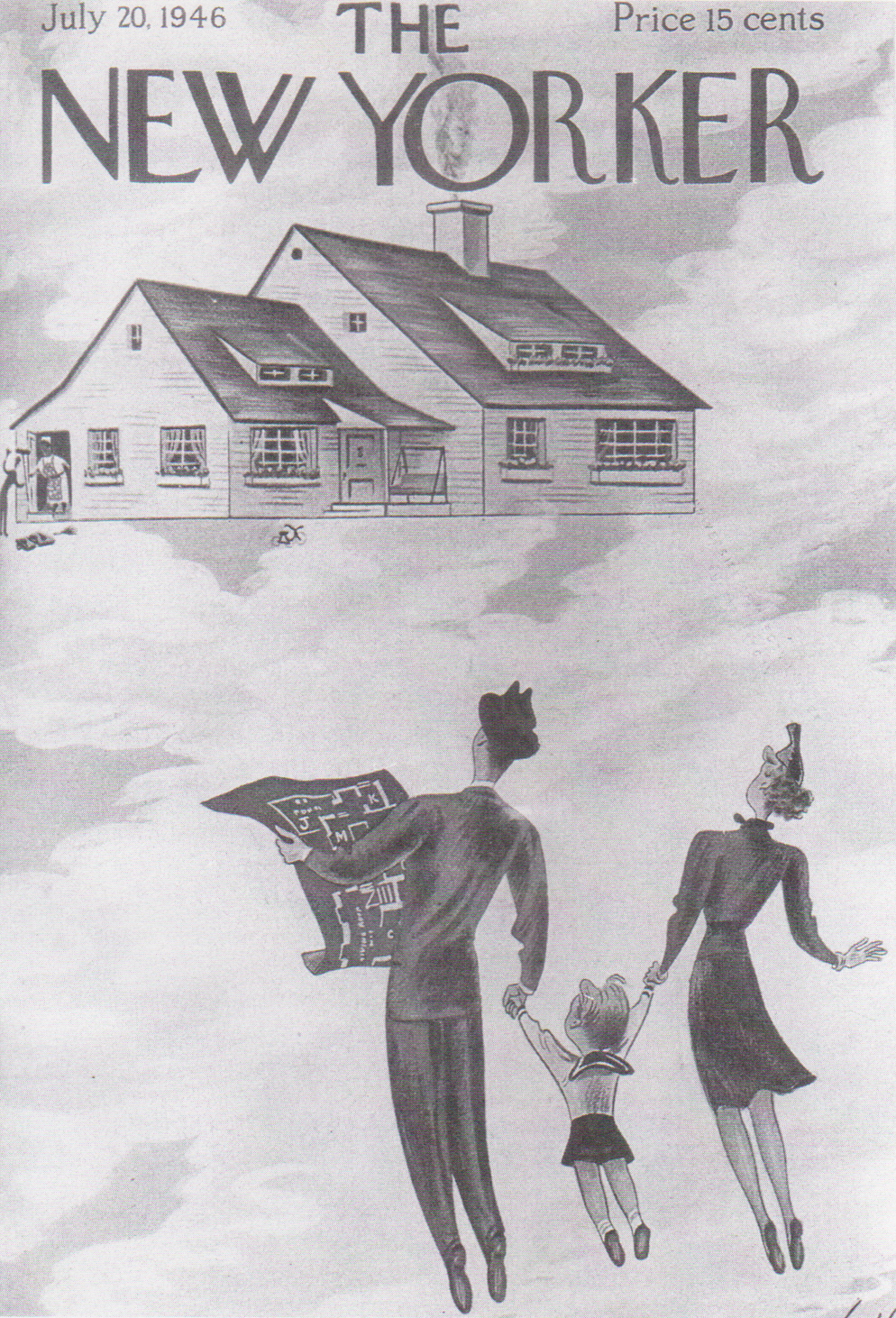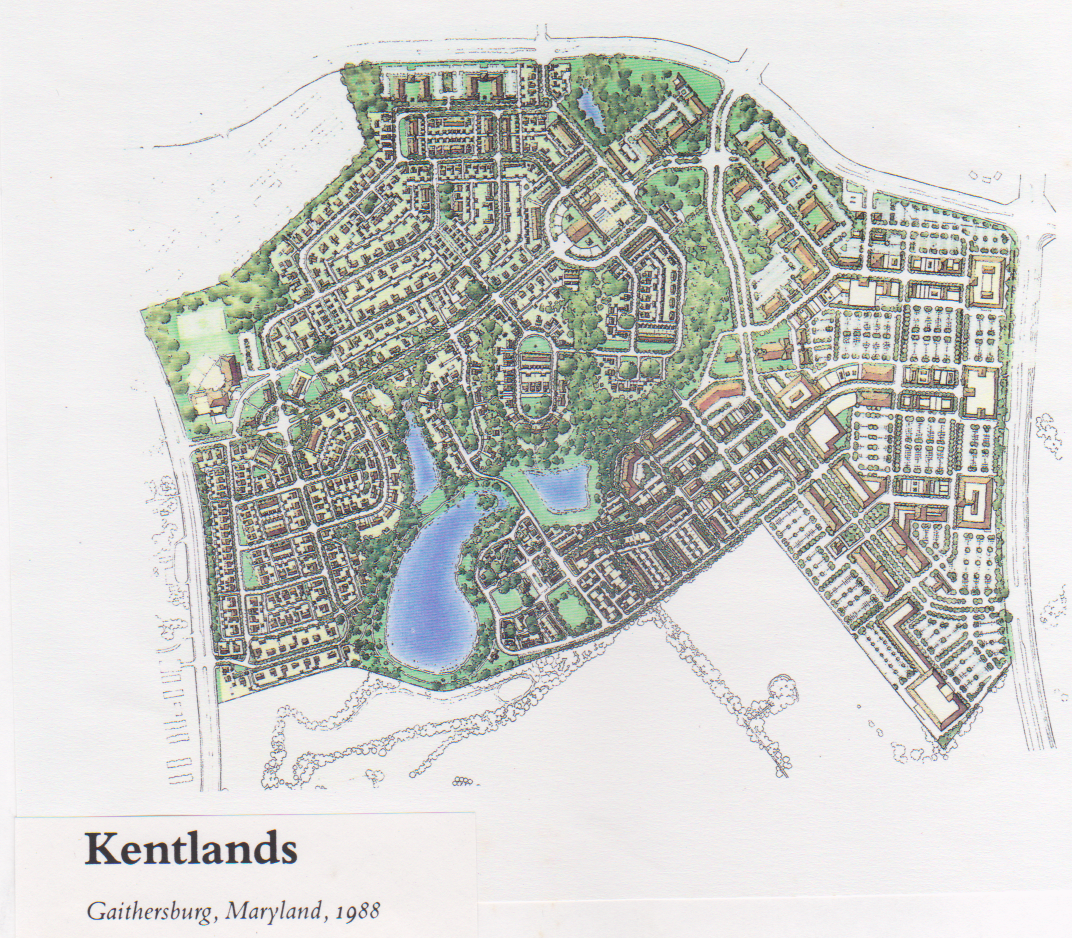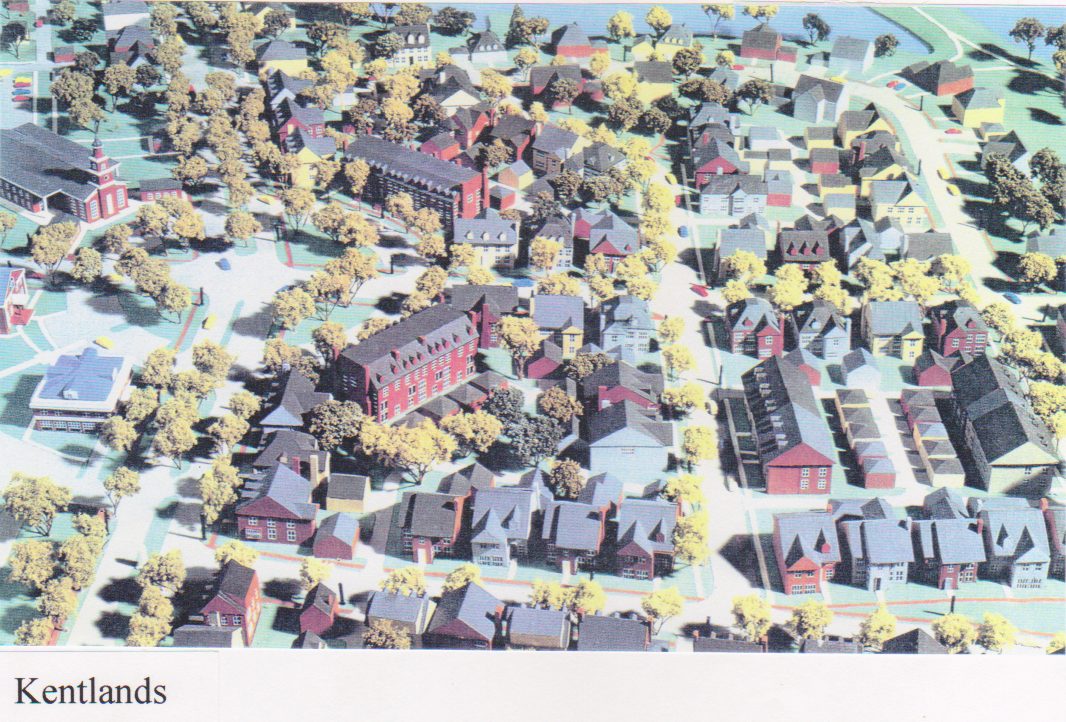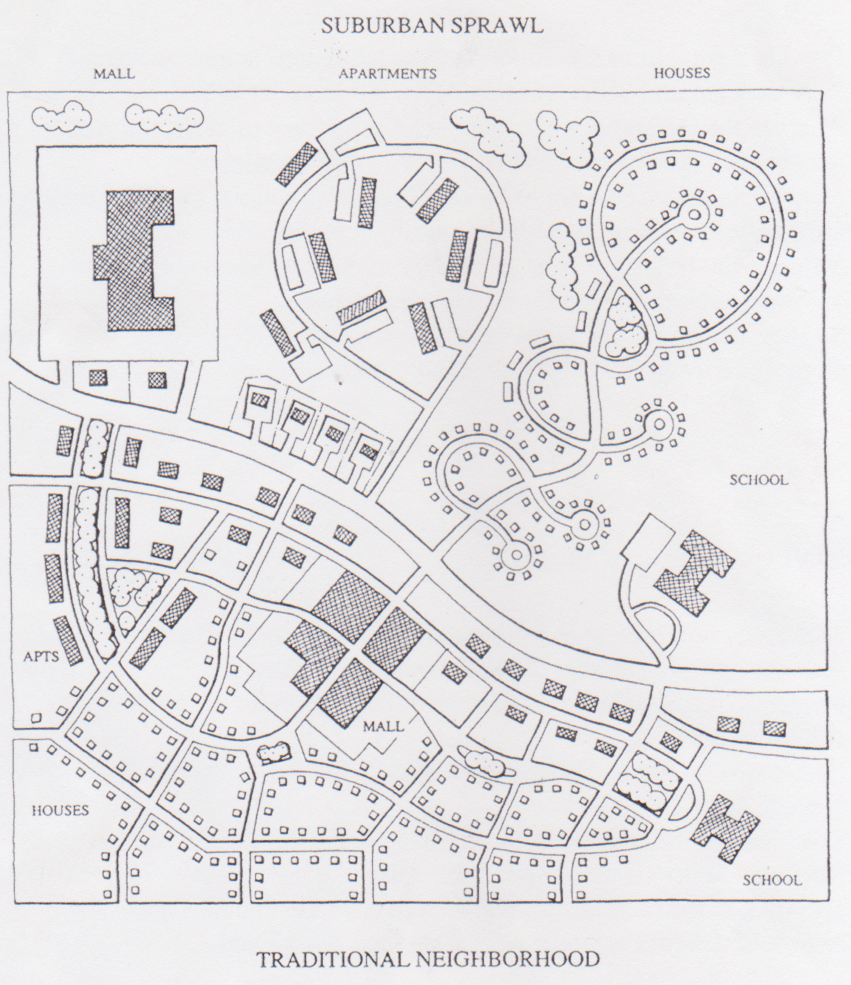Searching for
The Next "American Dream"
Thesis Proposal
By: Nurit Lichtman
Submitted to: Prof. Adrian Sheppard
December 1997
Affordable Homes Program
School of Architecture McGill University
Montreal, Quebec-
Table of contents
- 1.0 Introduction
- 2.0 Background
- 3.0 Context
- 4.0 Research Questions
- 5.0 Objectives-Goals
- 6.0 Scope/Limitations of study
- 7.0 Methodology
- 8.0 Outline
- 9.0 Schedule
- 10.0 Bibliography
-

-
Introduction
New Urbanism has been gaining momentum in the past few years as an alternative development strategy to the prevalent North American suburb.
This thesis research will focus on the impact of the early implementations of New Urbanism and will closely examine social, family and lifestyle aspects of these developments in the context of the underlying theory and the characteristics of the typical suburb.
The post-WWII suburban home has been the symbol of the "American Dream".
An affordable, spacious, individual homestead in a green surrounding.
However, today it is well known that is not at all what had been hoped for.
Today the suburb has been blamed for some of the most severe crisis North American society suffers from.
Expensive to buy and maintain, lack of community spirit, full dependence on the car, and environmentally and economically iresponsible.

-
 The old suburban dream is not relevant for todays culture because family structure has changed.
The old suburban dream is not relevant for todays culture because family structure has changed.
There are some single parent families, more couples without kids, and more mothers working outside home.
In addition, the average family income is lower in relative terms than it used to be when suburban development began.
Yet, as Peter Calthorpe noted, "We continue to build the post WWII suburbs as if families were large and had only one bread winner, as if the jobs were all downtown, as if land and energy were endless and as if another lane on the freeway would end traffic congestion." -
The New Urbanism movment emerges as an alternative that addresses suburban ills by calling for the return to some basic principles and for the design of new towns which re-adopt traditional design elements.
Those neo-traditional towns place stores, parks, and schools as an integral part of the community along streets that invite walking and interaction between its inhabitants.
This design concepts contrast sharply with the post war suburbs.
In the suburbs, zones function seperatly and apart from each other.
Resedential areas do not include any nearby parks, schools, or stores which are potential destenations that under "normal circumstances" people would walk to and have the opportunity to meet each other, socialize and by doing so create a sense of community.
Lacking that mixed use, inhabitants of suburbs experience isolation, loneliness and no sense of community.
This thesis will focus on these social aspects through the eyes of children.
Children tend to offer unprejudiced, sharp observations about their surroundings and their social life.
My research will cover children of the same age group in a conventional suburbs and neo-traditional town.
Using questions regarding their daily habits and opinions about their neighborhood, I will try to gauge issues like independence, spontaniaty, lifestyle, indoor versus outdoor activities and their frequency, and family framework.
This survey will also examine adults, particularly working mothers.
Issues such as children independence and initiative will be surveyed from their point of view.
Mary Cahill, a mother of two wrote a book about her responsibilies for transporting her kids around the suburban area.
According to her carpooling is the dark underside of suburbia.
As she noted, "There are times that you feel you are wasting your life."
Personally, I spent my childhood in a multi-use and diverse town, where I could meet all my needs independently.
Today, when looking back as designer and a mother of two suburban kids who are fully dependent on me and my car, I realize there is a major relationship between form and behavior.
This is the main argument of my thesis.
I approach this study with a personal perspective, searching for my own childhood environment to be brought back for the benfeit of my kids as well as for all other suburban children and their parents who deserve a better place to live in.
-
A survey that was done in Fannie Mae found that, by a margin of 3:1, Americans prefer a good community to a good house.
In addition, a survey that was published in the Nov.
97 of WSJ found that 74% of home buyers wanted walking and biking paths, 52% wanted community recreation facilities, and 55% wanted cluster retail stores.
New Urbanism has tried to address these wishes.

With the information I hope to get from CUBE, the CLC, the literature, and the help of my advisor, I plan to write the questionaire that will be distributed through the two target schools.
The questionaire will allow me to get quantitative data that will be used for statistical analysis.
The questionaire will include questions such as "How would you define your teritory in you community? Does it end in your front door? Does it end at the border of your lot? Or is it up to the end of your street?".
I plan to test run the questionaire at my daughter's school for the same age group of kids (4th-6th grades).
I plan to visit Kentlands early next year to conduct my research after collecting the preliminary information.
I also hope to attend the New Urbanism Congress that will be in Miami in the end of January.

Children are walking to school in Kentlands-
Background
Since ancient civilization, humans have lived in patterns that were structured in a way that allowed their inhabitants to meet daily physical, social and emotional needs.
Those universal human communities were mixed-use environments where rich and poor, residential and commercial, civic and private amenities were all laid out in mixed, integrated, dense and walkable patterns.
After the Second World War, the community model was changed for the first time in history.
The change was due to affordability of the car and a variety of other reasons, however the most influential component was the subsidized mortgage loans that were given to veterans in order to allow them to purchase a house.
Those loans were to be strictly used for new contruction of housing.
Therefore, for the first time in the history of man, developers were building single-use neighborhoods containing only housing.
While this new model had many advantages, it is well understood today that the suburb has failed to fulfill its role as the new sustainable form of modern development.
Moreover, it fragmented American society, damaged the family and community fabrics, and arguably resulted in a more stressful, less pleasing life style.
Suburbia has been one of the key drivers behind the severe crisis North American society suffers from today:- Full dependence on the car has created congestions, isolation and significant time and energy waste as well as increased pollution.
On average, Americans make 11 trips a day and commute between one to two hours a day.
Cars in North America consume 24% of GNP, 33% of all energy, and 80% of the oil.
In return they generate 33% of all CO2 pollution, and cost $115 billion of car accident damage annualy. - Kids are fully dependent on adults to drive them to school, activites, friends, movies and so on.
Moreover, once they reach the age that permits them to drive, they use the car constantly trying to compensate for all the years of dependence.
Teenage drivers were involved in 7,993 fatal crashes in 1995 (New York Time, 1996). - The elderly who can't drive need to look for alternatives to their previous residence.
Research has shown that 84% of all their households would have prefered to stay in their original homes rather than move to retirement communities.
- Full dependence on the car has created congestions, isolation and significant time and energy waste as well as increased pollution.
- Car ownership has driven living costs upwards consuming at least 20% of the income of an average family.
Families find it harder to save money and as a result home ownership is becoming less reachable.
"More than 50% of employed american families rent their housing" (Arthur Lomenick, Heritage Properties, Dallas TX).
Zeev Cohen.
It seems that Post WWII planners have been primarily concerned with the technological effieciency of the metropolis and pay much less attention to the emotional needs of the dwellers.
While the technological aspects are fairly well understood, litlle is actually known or being considered regarding the impacts of community design on human behaviour.
The New Urbanism movment claims to have the answer to those needs and other ills of modern society that the suburb has failed to address.

- Car ownership has driven living costs upwards consuming at least 20% of the income of an average family.
-

-
Methodology
The first step of this research is devoted to learning the topic by reviewing historical and contemporary literature.
This includes books, articles, Internet resources, and the on-line forum of the "Congress of the New Urbanism".
The research will be based on comparsion between a conventional suburban model to an alternative model in the same market area focusing on the same market minimizes the effects of cultural, climate, geographic and macro-economic factors.
By evaluating the difference design elements such as schools, common areas, housing units and shopping centers and by comparing the differences in residence behaviour and social patterns, conclusions can be made regarding the impact of design on behavior.
Through the Internet I have established a relationship with the center for livable communties in Sacramento, California.
The CLC has developed a visual preference survey as a technique to help communties get input from their citizens about what they like and dislike about their town.
Their responses are used in future planning efforts as a vision for what the public wants their community to be like.
This kind of survey had been used in the Portland, Vancouver and other communities.
The community image survey consists of 40 contrasting images of living environments.
80% of the slides come from the specific locations in which the survey was administrated.
The participants are asked to evaluate each slide.
I am considering using that idea of contrasting images as part of my questionaire.
I am planning to compare the results of my survery with the previous results that were collected by the center.
The CLC has offered to help me in putting together the questionaire for my survey.
Another connection I'm in the process of establishing is with CUBE, an organization that was formed by an art teacher and an architect.
CUBE works primarily with schools and children with the goal educating the general public on the built environment.
They utilize various techniques and have worked with the Seaside institude regularly.
-
Context
The subject of this study is Kentlands and a nearby suburb: 'Washingtonian-Woods'.
Both are located in Maryland within the city of Gaithersburg, 23 miles northwest of Washington D.C. Kentlands was concieved in 1989.
It includes six neighboorhoods, each combining elements of residential, office, civic, cultural and retail usage.
The target built-out of Kentland has been 1,600 resedential units with a population of over 5,000 resedents.
Three quarters of the targeted capacity has been completed at present.
Designed by Duany Plater-Zyberk, Kentlands was the first application of the traditional neighborhood development (TND) principles to a real, year-round, working community.
Unlike Seaside, which some critics dismiss as an isolated resort town and therefore not a true test of TND concepts, this community lies squarely in the path of suburban growth surrounded by housing subdivisions, shopping centers and office parks.
It is classical neo-traditional town that was designed according to the fundamental principles of the New Urbanism movement: -
Dense integrated community
The layout is in the form of a complete and integrated dense community to allow close proximity.
It contains housing, shops, work places (a few), an elementary schools, parks and civic facilities.
This integration enchorages residents to actually use the sidewalks and get to know their neighboors.
Most of the daily needs are met without the use of the car.
-
Variety of dwelling types
There is a nice variety of dwelling types in the form of detached houses, row houses, apartments and granny homes.
The only rule that is enforced is the location of the same type houses on both sides of a given street.
In Kentlands, young and old, singles and families, middle class and rich can find a place to live.
Center and walking distances
There are several squares in Kentlands that help define the neighborhoods and provide amenities within walking distance.
Community school
There is an elementary school in Kentlands, children are expected to walk to school typically unsupervised.
-
Image of streets and parking
The streets are narrower in Kentlands and lined with trees.
Traffic is forced to slow down, resulting in an environment that favors pedastrians and bicycles.
It also gives the neighborhood a sense of identity.
Parking is in the rear so that it doesn't dominate the front creating the typical suburban "garage-scape".
In most cases garages are moved to the rear of the building usaully accesed by the alleys which are the most favorite places for kids to play.
Defined edges
A lake and wetland preserve, greenbelts and small squares help define indivdual neighboorhoods in Kentlands.

-
Objectives-Goals
The main goal of my research is to validate the claim of DPZ that "Form affects behaviour".
The research will also:- Provide a general understanding of the traditional suburb prior to WWII.
- Provide a general understanding of the suburb post WWII.
- Analyze the difference between these suburban models, the reasons for the changes and their impact on North American society.
- Provide an understanding of New Urbanism principles and how they try to provide a sustainable housing paradigm for modern society.
- Validate the impact of new urbanism through field research and comparsion with an equivilant suburban sprawl.
- Suggest modifications to the original premisis of New Urbanism to better align this approach with the needs of modern society.
-
Scope/Limitations of Study
- This study will look at North American suburbs only and their evolution over the last two decades.
British examples such as The Garden City will be mentioned in order to relate their influence on the early North American suburbs. - Discussions on New Urbanism will also be limited to the North American context.
- The focus of the study will be on children and the impact of their physical environment on their behavior and quality of life.
The study will also look at the relationship between parents and their kids and the impact of dependency or lack of it on their daily lives.

- This study will look at North American suburbs only and their evolution over the last two decades.
-
Research questions
- What is it about the modern American suburb that has led to so much dissatisfaction?
- How has the typical suburban design of the past fifty years created the stress of daily life, and what better alternatives can be found?
- In which way does the physical enviornment affect the independence, quality of living and behavior of its inhabitants?
- How does the physical environment affect the relationship of duties between children and their parents?
- To what extent does New Urbanism design strategies provide a proper alternative to the suburb and the future planning of North America?
- How does New Urbanism become more than just a romantic movement? How does it respond to the changes and the needs of contemporary society?
- What is the next "American Dream"? Is it in the form of housing or a community?
-
Outline
Abstract
Resume
Table of Contents
List of Figures
Introduction
Chapter 1: Introduction- Background
- Research questions
- Goals
- Scope
- Context: Kentlands, Washingtonian Woods
Chapter 2: New Urbanism- Waking up from the dream-the need for a change
- Alternative developments-toward sustainability
- Eco-village
- Co-housing
- Neo-traditional towns
- New Urbanism-the fundamental principles
- State of the art projects
-
Chapter 3: Case Studies- Methodology
- Objectives
- Case study-Kentlands
- Case study-Washingtonian Woods
Chapter 4: Analysis and findings- Social aspects
- Family lifestyle
- Economic aspects
Chapter 5: Conclusions- The suburban social life of children compared with the neo-traditional one
- Future considerations
-
Schedule
Fall Term 1997
- Get familiar with the topic of New Urbanism through literature, on-line forums and previous research.
- Choose the subject of the research and the specific case studies.
- Develop thesis proposal.
Winter Term 1998
- Complete literature review.
- Collect information on the case studies.
- Write the questionaires and the case study methodology.
- Field visits to target locations. Observations and surveys through two schools (one in Kentlands and one in the test suburb)
Summer Term 1998
- Write draft of chapter 1, possibly chapter 2 as well.
- Analyze the two case studies.
- Write drafts of chapters 3, 4, 5.
Fall Term 1998
- Complete final chapters.
- Edit final draft.
- Submit thesis for final review.
-
Bibliography
Books
- The American Metropolis: Ecology, Community, and the American Dream/Peter Calthorpe
- The New Urbanism: Toward an Architecture of Community/Peter Katz.
- Home from Nowhere: Remaking our everyday world for the 21st century/James Kunstler
- The Geography of Nowhere: The Rise of Decline of America's man-made Landscape/James Kunstler.
- A Better Place To Live: Reshaping the American suburb/Philip Langdon.
- A New Urbanism: Lexicon/Richard McLaughlin
- The New Urbanism / Sidaro Sin
- What is New Urbanism? / Kevin Kelly & Heather Tansey
- Housing as if people matter / Cooper Marcus Clare.
- A Pattern Language / Christopher Alexander
- Seaside: Making a Town in America/ David Mohney and Keller Easterling
- The City Beatiful Movment/William H. Wilson
- Town Planning in Practice/ Raymond Unwin
- Carpool: A novel of suburban frustration/Cahill Mary
- The great good places/Oldenburg Ray
- The Future of the Childhood/Richard Lowe
-
Articles
- Michael Southworth. "Walkable Suburbs? An evaluation of Neo-traditional Communities at the Urban Edge", APA Journal, Winter 1997.
- Heidi Landechek. "Is New Urbanism Good for America?", Architecture, April 1996.
- Eve M. Kahn. "Laguna West Suburbia's Future?". Landscape Architecture, July 1996.
- Michael Leccess. "Next Stop: Transite Friendly Towns", Landscape Architecture, July 1990.
- Doug Kelbaugh. "The New Urbanism", Journal of Architectural Education, November 1997.
-
Edited by Nir Lichtman, after finding the original in the storage room, ~22 years after it was originally written on hard copy by my mom Nurit :)
- November 2019